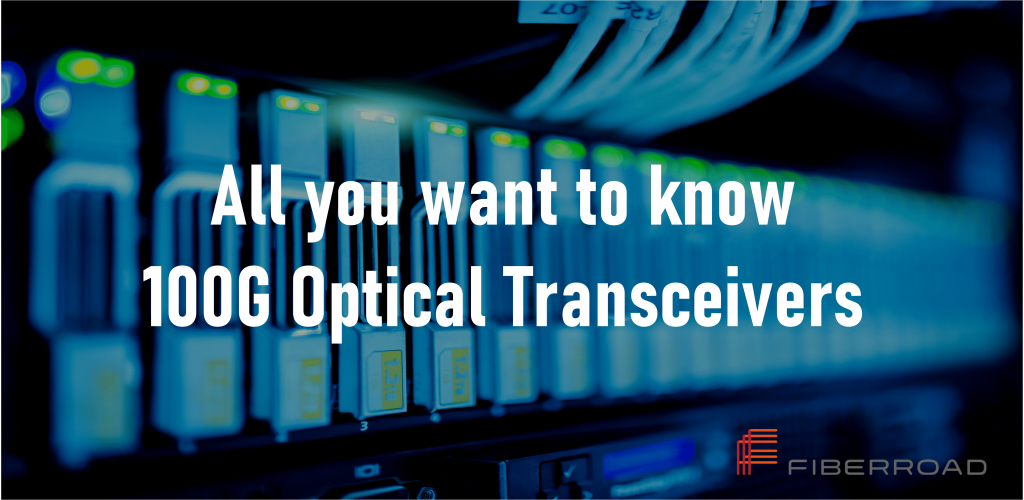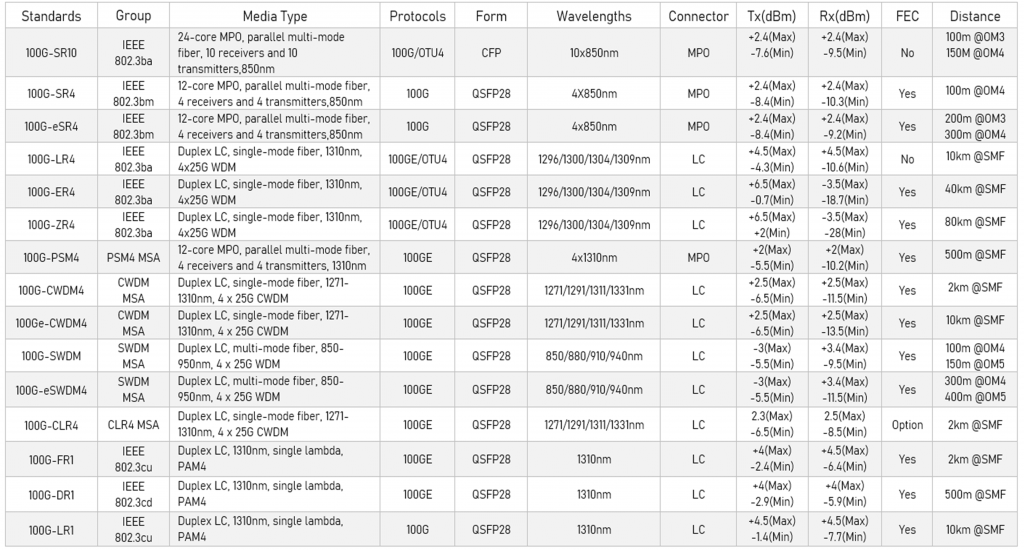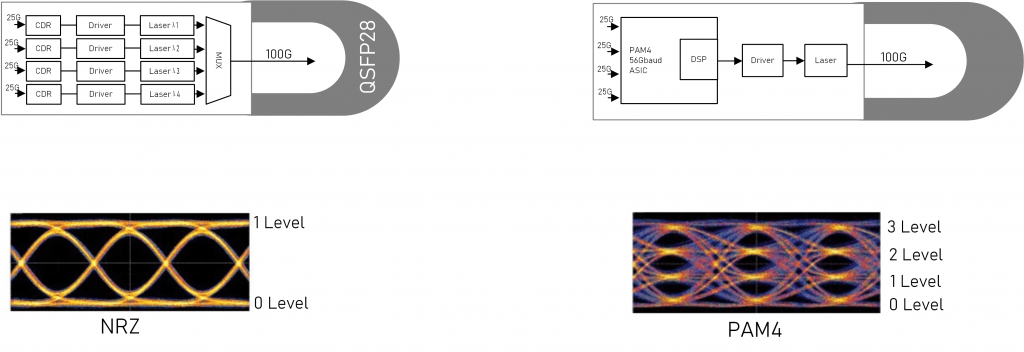With the growing demand for bandwidth from fast-growing cloud services and Edge Data Center Interconnection, 100G networks are growing rapidly. Before deciding to design a product or purchase a 100G optical transceiver, you should understand the type and characteristics of the 100G optical transceivers to be able to make better judgments and choices. Here we will provide a comprehensive introduction to 100G optical transceivers for all of you.

Standards of 100G Transceivers
Since the advent of the 100G network, IEEE, multi-source Protocol (MSA), and so on proposed a variety of standards for the 100G optical transceiver. In these standards, the PSM4 and CWDM4 standards developed by MSA industry organizations are more suitable for 100G QSFP28 optical transceivers in the market. The following table shows the details of the 100G optical transceiver standard, which usually use in Edge Data Center Interconnection。

How to choose an appropriate one

Different block diagrams between 100G-LR1 and 100G-LR4 QSFP28
We list a typical example to see what differences between optics techniques. Therefore you could well know why to generate SR4, PSM4, CWDM4 standards in general.

100G DWDM solution for Data Center Interconnection
Edge Data Center Interconnection: The reaches for this category range from 2 km to 80km. These links are generally latency limited and used to connect regional, distributed data centers. DCI optical technology options include direct detection and coherence, both of which are implemented using the DWDM transmission format in the C-Band (192 THz to 196 THz windows) of the optical fiber. Direct-detection modulation formats are amplitude modulated, have simpler detection schemes, consume lower power, cost less, and in most cases need external dispersion compensation. For 100 Gbps, a 4-level pulse amplitude modulation (PAM4), direct-detection format is a cost-effective approach for DCI-Edge applications. The PAM4 modulation format has twice the capacity of the traditional non-return-to-zero (NRZ) modulation format. For the next-generation 400-Gbps (per wavelength) DCI systems, a 60-Gbaud, 16-QAM coherent format is the leading contender
Metro Data Center Interonnection: As a group, this category lumps fiber distances beyond DCI-Edge up to 3,000 km for terrestrial links and longer for subsea. Coherent modulation format is used for this category, and the modulation type may be different for the diverse distances. Coherent modulation formats are also amplitude and phase-modulated, need a local oscillator laser for detection, require sophisticated digital signal processing, consume more power, have a longer reach, and are more expensive than direct detection or NRZ approaches.







